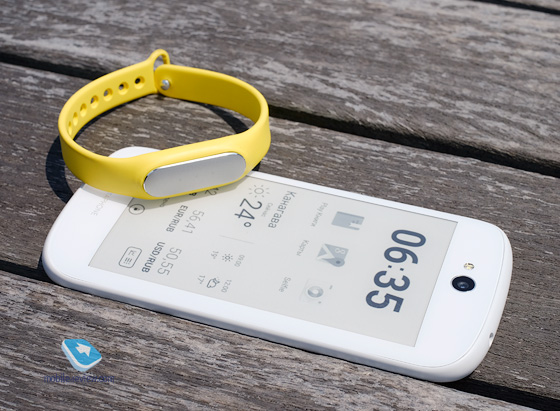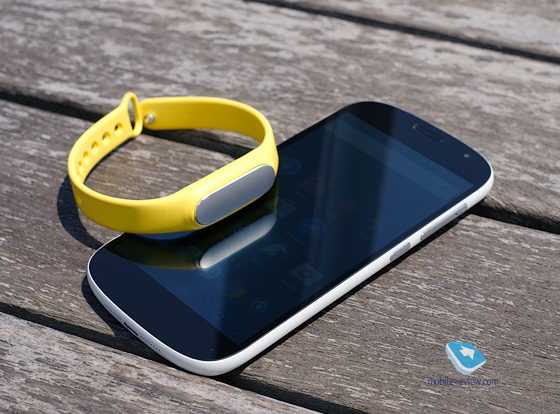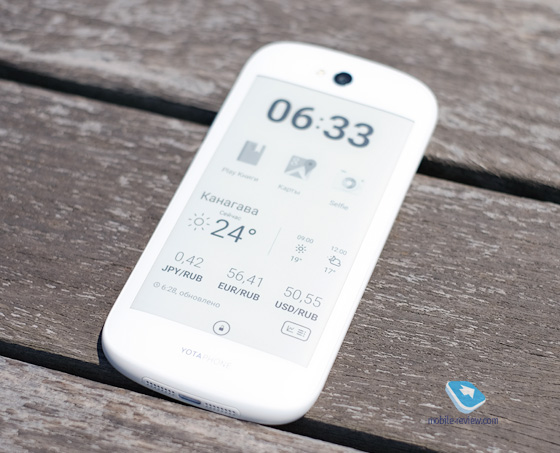I continue to talk about my 'weeks' with this or that device. This time let's talk about YotaPhone 2, which I have been using for more than a week, but fragmentarily, constantly changing it to other devices, so that in the end it is about one or one and a half weeks of using the device as the main phone. I know that everyone who is not lazy has already told about YotaPhone 2, dozens of reviews, all sorts of 'impressions' and other articles have been published, but I did not use the first YotaPhone, so I wanted to get acquainted with the second ones. Especially after a cursory examination of the device at the factory where it is assembled, as well as reading very contradictory reviews on this smartphone, from incredibly positive to brutally negative. Go.

I must say right away that for a number of reservations I liked YotaPhone 2, moreover, whether it was a smartphone not from a Russian company, but from a Chinese, Taiwanese or American company, my opinion would not have changed in any direction – we are talking about the perception of the device based on its characteristics and features, and not about some third-party things. In my case, the 'pedigree' of the smartphone does not matter at all, so I'll just tell you what I liked about YotaPhone and what I didn't like.

The first positive impression is the design. At the same time, I immediately caught myself thinking that this was strange for me, I got used to smartphones where metal is present in one volume or another, be it an aluminum or steel frame or almost the entire body, with the exception of the screen. The Yota Phone 2 has a metal chassis, but you can't see it from the outside, so you can call the device completely plastic and glass. The frame is made of plastic, both screens are covered with Gorilla Glass. From the front, the smartphone resembles Nexus 4, from the back – I don't know. On the whole, the impressions from the design are very good, I won't say that there are any original solutions here, but only the second display, which is always on, gives the device a hundred points of appearance and unusualness.

The second positive point is connected with the dimensions of YotaPhone 2 – the main screen with a diagonal of 5 'made it possible to make the device compact, with the body width practically minimal for this diagonal and, accordingly. comfortable grip. The impression is spoiled a little by the very smooth and therefore slippery back of the smartphone, but here the engineers compromised anyway. The surface should be such that the smartphone fits comfortably in the hand, but at the same time it should also provide a comfortable sliding of the finger on the additional eink-screen.

The third item is pure OS Android. Oh, how awesome it is to use a clean, unspoiled Lollipop after the weekly bounce from one shell to another. Here, of course, the moment that I need to change smartphones and, accordingly, shells, at work, also affects, and if you 'sit' on one smartphone for a year or longer, it is hardly possible to switch to a clean Android 5.0 . will make you so happy. But that's how it is with me. YotaDevices chose a clean OS for their smartphone and this is a very correct decision, in my opinion.
The fourth is an additional screen. Oddly enough, during the use of YotaPhone 2, I have never read a book or some other text from an e-ink screen on a smartphone, but at the same time I felt all its benefits even without this seemingly main role for him. In my YotaPhone 2, the e-ink display shows the time (in digital format, analog is beautiful, but not so practical for me), the weather at the current location, exchange rates, as well as three shortcuts – launching the camera, maps and books, the latter I do not know Why did I add, as I said, I do not read the texts from this screen. This is exactly the information that I need most often and how convenient and cool it is to see it, just taking the smartphone out of the pocket and not pressing or turning on anything on it. You get used to it very quickly – you took out the device, looked at the time and weather, and threw it back.

Now about the cons. The first is of course the main camera. I will not talk about the frontal one, because it is not needed here at all. I pulled the shooting button to the second screen and, if I need to make a 'self', I simply activate the main camera, using the e-ink screen as a viewfinder. So, the main camera with a resolution of 8 megapixels allows you to take good pictures on a clear sunny day. But this is where its merits end. With a lack of light, when shooting indoors, when trying to shoot macro, the pictures are, frankly, not very good. YotaDevices replies that they are aware of the problems with the camera software and that while it is, to put it mildly, average in quality and promise to improve this part of the device with future updates. For me personally, at the moment this is the only stumbling block before using the YotaPhone 2 as the main device, say, a month or longer.

I have nothing more to find fault with, except that AMOLED – the screen is not my favorite format, but in general I am more or less used to them during my work with new smartphones and especially 'Samsung'.
